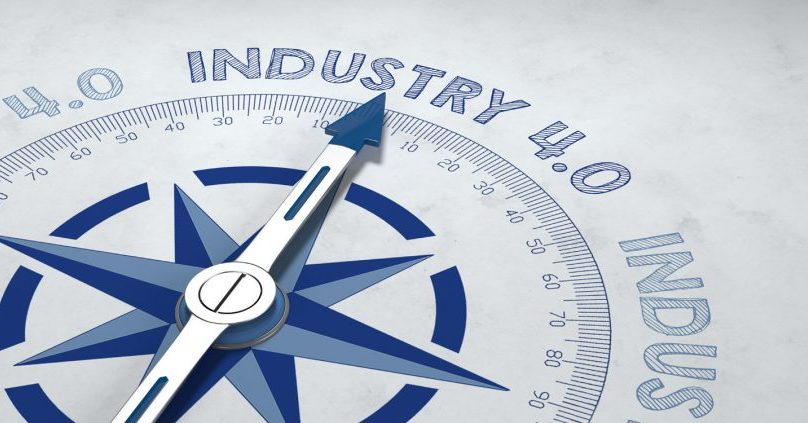
Alexa helps usher in a new day by automatically kicking on the lights and opening the blinds as we rise. But just as we raise our heads off the pillow in the morning, the era collectively known as the fourth industrial revolution is also awakening, and its rise is shaking up industries in just about every corner of the globe.
And while past revolutions were spurred on by how humans changed the world and connected with each other, the fourth industrial revolution promises something different altogether, with machines taking the lead as they evolve and connect with each other. And at the center of it all is the Internet of Things (IoT), the steam powering this latest revolution forward.
Why Big Business is Buying In
IoT strategies are being successfully applied across a whole host of industries, including media, technology and entertainment, given its ability to interconnect media across devices and services. For companies, IoT is transforming costs, creating better customer experiences, generating efficiencies and establishing entirely new and innovative business models.
Right now, big business is putting its weight and substantial resources behind pioneering IoT initiatives, all of which are accelerating the pace of the fourth industrial revolution. Cisco forecasts over 50 billion devices will connect to the IoT by the year 2020, causing a reimagination of how broadcast companies should operate and provide content to consumers.
That’s among one of the many reasons why Cisco and similar companies are integrating IoT as part of its key strategic growth plans and product offerings. Cisco is aiming to build a portfolio of solutions to assist businesses, including broadcasters, get the most out of their IoT data. Its Jasper Control Centre for NB-IoT (narrow band-IoT) is now the first commercially available global platform.
NB-IoT is expected to drive growth of IoT on a massive scale. Gartner’s 2017 Emerging Technology Analysis: NB-IoT forecast predicts there will be more than three billion NB-IoT connected devices by 2023. With it will come a steep drop in the power and cost of connectivity, to the point that even the simplest things will deliver IoT services. This is where the growth is, the fuel behind the fourth industrial revolution. The bar of entry is being lowered to the point where it seems virtually everything will have the power to be connected and it’s becoming increasingly cost-effective to do so.
The race is on as global corporations seek to establish their footprint in the global IoT landscape. Swedish multinational networking and telecoms giant Ericsson unveiled its IoT Accelerator Marketplace in February, capitalizing on the demand for collaboration within the digital ecosystem community. According to the most recent Ericsson Mobility Report, the widespread impact of IoT is being felt, as new capabilities and use cases impacting consumer services and industries embarking on digital transformations.
Broadcast Takes the Lead
At IBC2018 in September, broadcasters and industry leaders will join together to discuss the overarching trends at the crossroads of the increasingly intertwined worlds of IoT and 5G. The fourth industrial revolution will no doubt shape this conversation, in the form of IoT and 5G developments.
Overall, 5G and IoT could offer revenue potentials between $204-619bn by 2026, according to Ericsson. Like Cisco, Ericsson and others, broadcasters are also seeing the endless possibilities of IoT, where there is value beyond just operational savings.
One of the most intriguing areas of growth and revenue potential is video. Kris Hardiman, Ericsson’s head of portfolio marketing for Europe and Latin America, has noted that when it comes to the IoT and 5G market verticals, enhanced video has potential for $96bn in new revenues, which would be a boom for both mobile operators and broadcasters.
Top broadcasters, like the BBC, are making future bets on IoT. Currently, BBC’s R&D department is exploring new methods in which network connected digital objects can provide intuitive access for audiences to view, discover, control and share content.
Take for example the Playlist Button, a media discovery app from BBC’s R&D department. As part of its work on connected devices/IoT, the button allows listeners to add music they love from BBC Radio straight to Playlister, using Bluetooth and Wi-Fi.
The Benefits of IoT for Broadcasters and Consumers
IoT offers a wealth of revenue opportunities for broadcasters, but the most obvious is the various forms of data they will have access to, such as demographic, location, behavioral and user preferences, coming from a myriad of devices and systems. By making sense of all this new data, broadcasters can then develop detailed consumer profiles to deliver real-time, personalized content across screens and devices.
On the consumer end, IoT is poised to turn the viewer experience on its head. For example, viewers at home will never miss a thing, as a connected TV will soon be able to automatically pause when it detects an incoming phone call, when a doorbell rings, or when users are out of the room.
Multi-sensory experiences in broadcast is also poised to take off, as sensor-activated devices could alter the environment of the room based off the content being consumed. Take for example a vibrating chair, or audio and lighting changes to set the mood and atmosphere. It’s exciting to imagine creators pushing the boundaries of storytelling beyond what we ever thought possible, thanks to IoT.
For IoT to reach its true potential in the fourth industrial revolution, collaboration within the broadcast industry will be vital. Companies like Cisco, Ericsson and others are making forward-thinking investments to promote this spirit of connecting and working together.
Now it’s up to broadcasters to use its collective imagination to figure out new and innovative ways to integrate IoT in its business models. If successful, broadcasters will play an outsized role in the progress of fourth industrial revolution, and in turn lay the foundation for how the entire media and entertainment industry moves forward.
About the Author
 Jaisica Lapsiwala is Head of Content at IBC. Her role is to drive the Event Content function of the business forward, developing the core conference and its connected live products whilst aligning these to IBC’s overall content strategy.
Jaisica Lapsiwala is Head of Content at IBC. Her role is to drive the Event Content function of the business forward, developing the core conference and its connected live products whilst aligning these to IBC’s overall content strategy.



